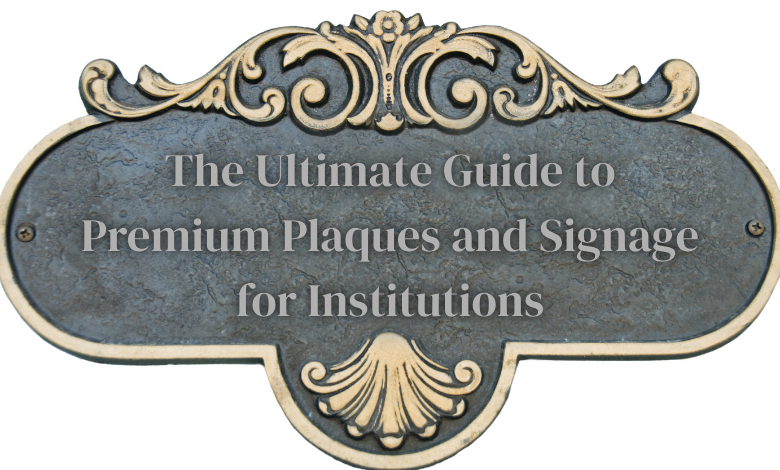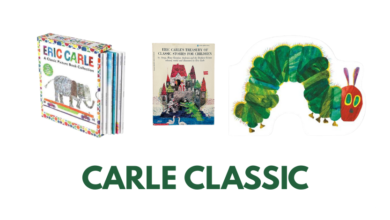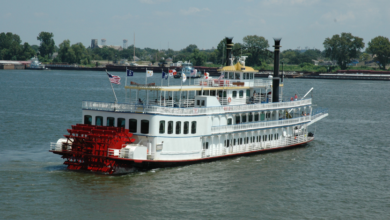The Ultimate Guide to Premium Plaques and Signage for Institutions

For institutions like universities, government buildings, hospitals, and historical societies, creating an atmosphere of permanence, prestige, and authority is paramount. The physical elements within and around these spaces play a crucial role in shaping public perception and reinforcing a strong institutional identity. Among the most effective tools for achieving this are high-quality, premium plaques and signage. These are not just functional items for direction or information; they are powerful symbols of legacy, achievement, and enduring values. This guide explores the essential types of premium signage that can elevate an institution’s presence, offering insights into how each contributes to a distinguished and professional environment.
1. Cast Bronze Plaques for Timeless Recognition
When it comes to conveying a sense of permanence and honor, nothing compares to cast bronze plaques. Their substantial weight, classic appearance, and exceptional durability make them the gold standard for commemorating significant events, honoring distinguished individuals, or marking historical sites. Unlike engraved or printed alternatives, the casting process creates raised, three-dimensional text and imagery that provide a tactile and visually impressive quality.
Institutions use cast bronze plaques for a variety of purposes, from donor recognition walls that celebrate philanthropic contributions to historical markers that narrate a building’s rich past. A 2019 study on architectural psychology noted that materials like bronze evoke feelings of stability and respect in observers. The natural aging process of bronze, which develops a beautiful patina over time, further enhances its classic appeal, suggesting a long and storied history. This makes it an ideal choice for dedications, memorials, and any application where longevity and gravitas are essential. When selecting a plaque, consider custom shapes, border styles, and background textures to create a piece that perfectly aligns with your institution’s architectural aesthetic.
2. Architectural-Grade Metal Lettering for Buildings
An institution’s name on its facade is often the first impression it makes. Architectural-grade metal lettering for buildings offers a sophisticated and commanding presence that sets a tone of professionalism and significance. Materials such as cast aluminum, stainless steel, and brass are popular choices, each offering a distinct look. Cast aluminum can be finished in a variety of colors and is lightweight yet durable, while polished stainless steel provides a sleek, modern aesthetic. Brass, with its warm, golden hue, conveys a sense of classic elegance.
These letters are crafted to withstand environmental elements, ensuring they maintain their appearance for decades without fading or deteriorating. The precision of modern fabrication allows for the faithful recreation of an institution’s specific font and logo, maintaining brand consistency. Whether installed on a university’s main hall, a courthouse, or a corporate headquarters, high-quality metal lettering integrates seamlessly with the architecture, enhancing the building’s character and making a definitive statement of identity. It’s a significant step up from standard plastic or vinyl lettering, projecting an image of substance and permanence that resonates with visitors and stakeholders alike.
3. Custom-Designed Wayfinding Systems
For large institutions like hospitals, university campuses, and government complexes, effective navigation is crucial for a positive visitor experience. A premium wayfinding system goes beyond simple directional signs; it is an integrated network of signs and directories designed to be intuitive, accessible, and aesthetically cohesive. These systems often incorporate a variety of sign types, including freestanding pylons, wall-mounted directories, and overhead directional signs, all unified by a consistent design language that reflects the institution’s brand.
High-quality materials such as brushed aluminum, etched glass, and finished hardwoods are often used to create a sophisticated look. Good wayfinding design reduces confusion and anxiety for visitors, which is particularly important in high-stress environments like medical centers. According to the Society for Experiential Graphic Design (SEGD), well-designed wayfinding can significantly improve visitor satisfaction and operational efficiency. By investing in a custom-designed system, an institution demonstrates a commitment to user experience and thoughtful organization, reinforcing its reputation as a professional and well-managed entity.
4. Etched Plaques for Intricate Detail
While cast plaques are celebrated for their bold, traditional appearance, etched plaques offer a superior solution for designs requiring fine detail and precision. This process involves using chemicals to incise an image or text onto a metal surface, such as stainless steel, brass, or copper. The result is a crisp, permanent graphic that can capture intricate logos, detailed portraits, and small, complex fonts with remarkable clarity.
Etched plaques are an excellent choice for interior applications where viewers will see them up close, such as room identification signs, detailed directories, or small-scale memorial plaques. For example, a university department might use an etched stainless steel plaque to display its mission statement and list faculty members, as the process allows for a large amount of text to be presented in a clean and readable format. The smooth, refined finish of an etched plaque lends a contemporary and elegant feel, making it a versatile option for institutions looking to blend modern design with a lasting message.



